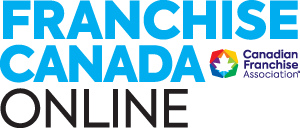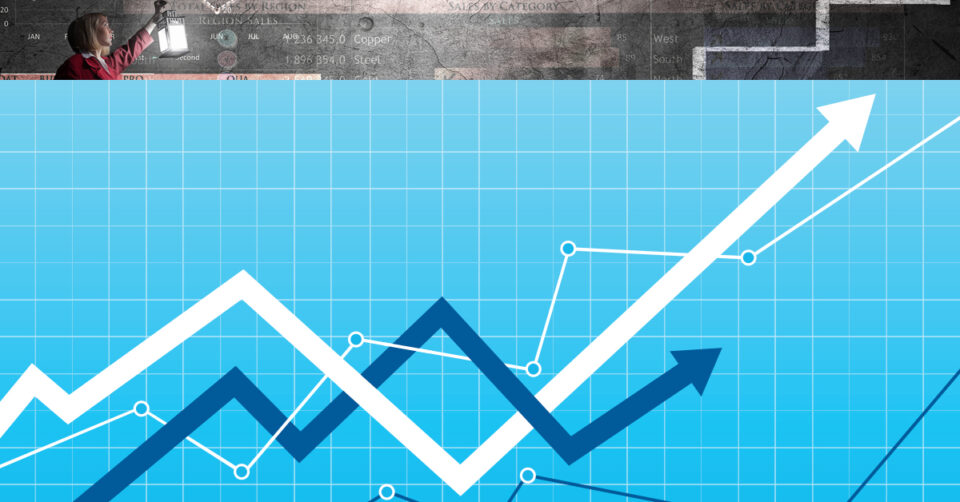Rate-hiking cycle ending as recession edges closer
The Canadian economy continues to inch closer to a recession in 2023. Early signs of easing pressures are raising odds that the downturn will be ‘mild’ by historical standards. Unemployment dropped to record lows (since at least 1976) over the summer and has edged up only slightly since. But headwinds from aggressive central bank interest rate hikes are gaining strength. Housing markets have already retrenched sharply since spring. And consumer spending is expected to soften further as high inflation and rising debt payments cut into purchasing power. While there are risks ahead with this outlook, there are early signs that inflation pressures may have peaked, and central banks could be close to the end of their rate-hiking cycle.
Inflation is easing up on both sides of the border
Price growth is still running well above central bank targets, but increases have been smaller and less-broad based in recent months. The global supply chain crunch that drove much of the initial surge in inflation is easing. Commodity prices remain high, but have declined after surging earlier this year when Russia invaded Ukraine. Oil prices are running 40 per cent below their early June highs, and wheat prices are down 50 per cent from peak levels earlier this year.
Broader measures of inflation are still too high, but have also eased up in both Canada and the U.S. Month-over-month increases in price growth, excluding food and energy products, fell to 3.7 per cent (annualized) over the last three months in Canada, down from a peak of more than eight per cent on that basis in the summer. U.S. core (ex-food and energy) price growth has been higher. But that’s increasingly due to surging home rent prices that are the delayed result of past market hikes and a lag in new leases. The Bank of Canada’s Q4 Business Outlook Survey hinted that the re-pricing frenzy as pandemic lockdowns eased may have run its course, as businesses pay closer attention to competitive pressures before passing along cost increases to customers.
Central banks are getting close to hitting pause on further rate hikes
With inflation still running well above target, early signs of slowing price growth won’t be enough for central banks to ease off on the monetary policy brake. But, they do suggest interest rates are close to levels that are ‘restrictive’ enough to slow economic activity and inflation in the year ahead. After a 50 basis point hike at the December meeting, we expect the Bank of Canada is now free to pause at current overnight rate of 4.25 per cent, as the lagged impact of interest rate increases to-date slow economic activity.
‘Mild’ recession still expected
Pausing interest rate hikes won’t prevent a Canadian recession in the year ahead. A mild downturn probably already a given, in light of the current restrictive level of interest rates. This will consumer spending in the quarters ahead. In Canada, the share of household disposable income eaten up by debt payments will spike higher, to record levels, by the end of next year.
Global supply chain pressures are easing, but so is the manufacturing sector outlook
Though ocean shipping costs and times are still above pre-pandemic levels, they’ve eased substantially. The cost of shipping a container from China to the U.S. west coast has fallen by more than 90 per cent from peak levels last year. After running full-out for much of the last couple of years, closely watched manufacturing PMI surveys in most major economies (including Canada’s) are pointing to a contraction in the sector in the year ahead.
Immigration and business investment will be key to the next economic recovery
Every recession in history has been followed by a recovery. We expect higher immigration and business investment will be key to fuelling a return to growth later next year and into 2024. Labour shortages have been the heaviest weight on economic growth. And while those shortages might ease in the year ahead as the unemployment rate rises, they’ll re-emerge as the economy recovers. The ongoing retirement of the baby boom generation is creating structurally lower supply of workers. That means more upward pressure on wages, and potentially structurally higher interest rates than we were used to pre-pandemic.
Increased immigration targets will help boost labour supply and the longer-run productive capacity of the economy. But higher wages also add an incentive to businesses to boost the production capacity of the existing workforce through increased investment in productivity-enhancing equipment and technologies.
This outlook was contributed by RBC (originally published December 14, 2022) and written by Craig Wright, Robert Hogue, and Nathan Janzen. To access the expanded outlook report, please visit RBC’s Canadian Economic Outlook.
Exclusive Q&A
Franchise Canada had the opportunity to connect with RBC economist Carrie Freestone, for further insight into what we can expect in 2023, especially as it relates to the Canadian franchise industry.
Franchise Canada (FC): We hear a lot about an upcoming recession. What can we expect in 2023, especially as it relates to franchising?
Carrie Freestone (CF): We are expecting a mild to moderate recession in the first half of 2023, when elevated inflation levels and interest rates north of four per cent begin to weigh on consumer demand. The good news is, inflation will likely continue to trend lower into 2023. The Bank of Canada’s preferred core measures have reported month-over-month declines since inflation peaked in July, and the breadth of inflation has continued to narrow, as well. With the Bank of Canada likely having reached its terminal rate for this cycle (at 4.25 per cent as of the Bank’s December meeting), inflation is expected to continue to trend lower and average 3.2 per cent in 2023.
Labour markets remain exceptionally tight. To date (as of November), there are 60 per cent more job openings than there were prior to the pandemic. This will limit the degree of labour market softening that we will witness in 2023. The unemployment rate is expected to peak at 6.8 per cent in 2023. With many industries already staffed for a recession (such as the hospitality sector), job losses will be limited.
FC: Based on consumer spending over the past year, are there any categories that you see continuing to trend strong in 2023?
CF: Much of the pullback in consumer spending in 2023 is likely to come from discretionary spending on merchandise. Higher inflation and rising debt servicing ratios will erode consumer purchasing power in the first quarter. We will likely observe manufacturing activity soften alongside discretionary goods spending. The wild card will be hospitality sector demand. There is substantial pent-up demand for travel and hospitality services, built up during the pandemic when those services were often less available for purchase. While hotel accommodation spending has already fallen from its summer peak, restaurant spending remains strong into December.
FC: Are Canadian consumers carrying a large debt load as we head into 2023? What does this mean for businesses?
CF: Yes, Canadian households owe approximately $1.82 for every $1 of disposable income as of Q3. For now, debt payments are still relatively low because a lot of that debt was financed at lower fixed rates. But monetary policy has a lagged impact. While interest rates have risen by 400 basis points in less than a year, debt servicing ratios will continue to trend higher into 2023 and 2024. By mid-2023, we anticipate Canada will report a record high debt servicing ratio, at which point the average Canadian household will devote more than 15 per cent of their income to debt payments.
Higher debt payments are demand destructive and will result in eroding demand for consumer goods and services. Real wage growth is still negative, as year-over-year wages are significantly below headline inflation. At the same time, key essential goods like groceries are up over 11 per cent. With this in mind, as Canadians have to pay more to service their debt, they will have a smaller share of take home pay to devote to discretionary spending.

